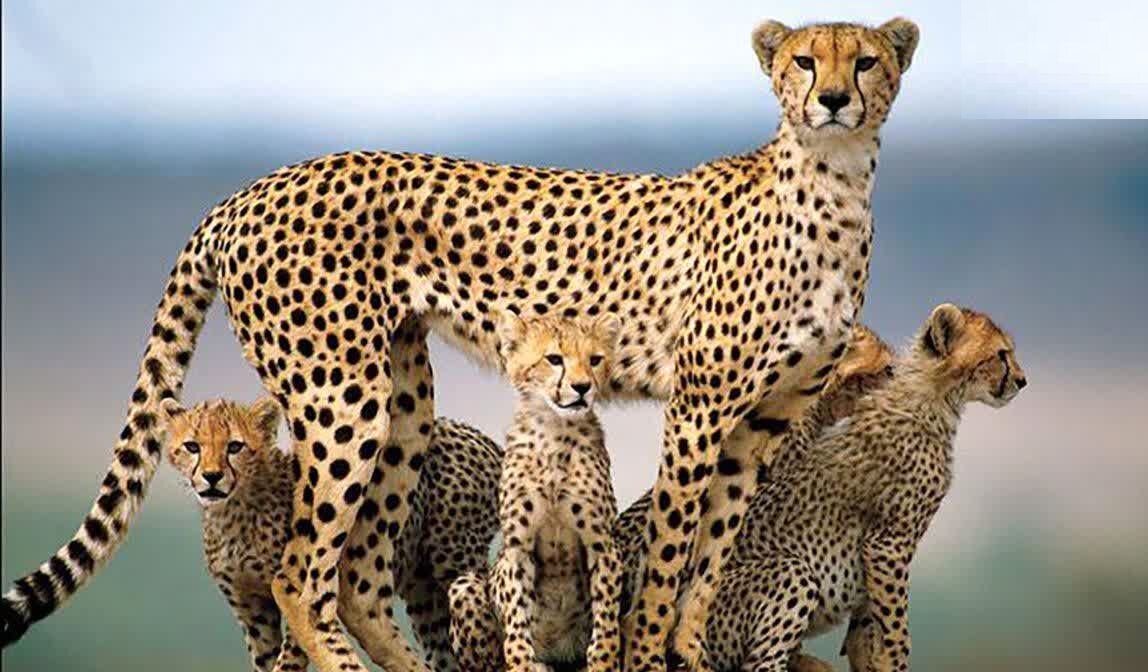Improving habitat quality for Asiatic cheetahs on the agenda

TEHRAN –The Department of Environment (DOE) has placed improving the quality of natural habitats for Asiatic Cheetahs as well as reducing threats to them with the support of the private sector and local communities on the agenda.
The expansion of the cheetah territory, and safeguarding their habitats have increased the number of cheetahs, IRIB quoted Hamid Zohrabi, an official with DOE, as saying.
Highlighting the key role of public participation in the conservation of Asiatic cheetahs, the official said over 400,000 hectares area of land between Turan National Park in Semnan province and Miandasht Wildlife Refuge in North Khorasan province are protected by the private sector.
The plan to increase prey is being implemented by the cooperation of the DOE and local communities, he noted.
Zohrabi added that the DOE has also taken measures to breed the cheetahs in captivity.
Endangered species conservation committee
In October, the official said that the DOE is planning to organize a committee for the preservation of critically endangered species including cheetahs, black bears, and great bustards.
“The Department of Environment is planning to protect endangered species by establishing conservation committees with the help of non-governmental organizations, as well as fostering cooperation with the public, rangers, experts, and government agencies,” IRNA quoted Zohrabi as saying.
Conserving cheetahs
Growing the population of cheetahs in the wild is the top priority of the DOE, but their breeding in captivity is also scientifically monitored at the Turan National Park Research Center in the city of Shahrud, IRNA quoted Bahram-Ali Zahiri, an official with the DOE, as saying in April.
Measures are being taken to preserve cheetahs from extinction by raising their population to 50, he added.
Cheetahs are polygamous mammals. Asiatic cheetahs reach maturity at 2 to 3 years of age and can reproduce until 8 years of age. Female Asiatic cheetahs give birth to multiple cubs, he explained.
A document on the growth and maintenance of Asiatic cheetahs as a valuable and endangered species has been compiled for the first time in Iran marking a valuable scientific achievement by local experts, Zahiri said.
Studying the physical conditions of these cheetahs from birth to old age has contributed to the development of the growth and maintenance document for Asiatic cheetahs.
According to experts, the best habitat for the Iranian cheetah is the 100,000-hectare area of Turan National Park in the east of Semnan province. However, the biological territory of this valuable species is reported to be 100 to 300 km beyond this national park necessitating measures to be taken to save their lives in the entire Turan region.
To increase the number of cheetahs, the DOE has to lower the threats. Expanding their territory, increasing the number of prey, Hassan Akbari, an official with the Department of Environment (DOE), said.
“We have tried to protect the habitats around Turan with the assistance of the private sector.”
Now, more than 14 assistant rangers are preserving the habitats under the management of the private sector and the supervision of the DOE.
“We will ensure there are enough prey by protecting prey to breed in captivity to ensure the security and survival of cheetahs’ cubs in those habitats,” the official added.
Due to the fact that in the southeast of Turan, there was almost no prey left, a number of rams and ewes were taken to the area and released into the wild.
Enhancing road lighting, and fencing are part of the measures taken to improve the security of the roads.
MT/MG
